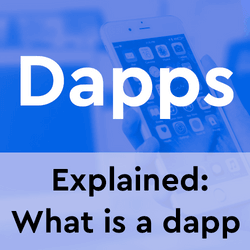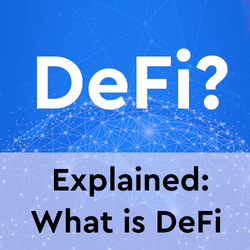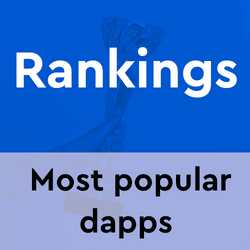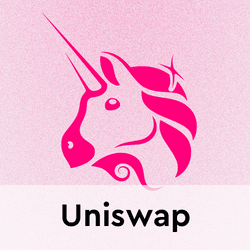Learn to understand the building blocks of the DeFi revolution
You can find a new liquidity pool every day, and perhaps you could be a liquidity provider. These terms are part of DeFi, from trading, to borrow-lend protocols, yield farming, blockchain games, and on-chain insurance. It’s a relatively new technology for the crypto market, so there are many questions about this topic.
Liquidity pools and liquidity providers are everywhere when you’re swapping tokens on a decentralized exchange, also on DappRadar’s Token Swap. In order to understand how this works, we decided to break everything down and, using simple examples, explain what liquidity pools are, how they work, and who liquidity providers are. Let’s go!
What Is A Liquidity Pool?
A liquidity pool is a smart contract with locked tokens that are used to enable decentralized trading. The pool acts as a kind of “storage” in which market participants put crypto assets together to provide the necessary liquidity for everyone who wants to exchange this asset.
The emergence of liquidity pools was a kind of ‘response’ to the inefficiency of the order book system within decentralized exchanges. Using order books, market makers faced a significant problem in the form of high Ethereum gas fees. As a result, executing trades turned out to be very expensive and not profitable for both market makers and traders.
Another driver for launching liquidity pools was low network throughput. When it comes to billions of dollars in daily trading, blockchains cannot provide fast enough transaction speeds.
How Does A Liquidity Pool Work?
The simple liquidity pool includes a trading pair of 2 tokens equivalented in value to each other. For example, let’s take Ethereum (ETH) and the US dollar coin (USDC) pair.
The liquidity provider must add such an amount of ETH and USDC to the pool comparable in value. If the provider decided to invest 1,000 ETH in the pool, he must accordingly invest 2,000,000 USDC. In this case, 1 ETH is equal to 2,000 USDC (we use hypothetical asset value).
Anyone can use this pool to exchange USDC for ETH (and vice versa). For example, if a user decided to buy 100 ETH, he must send 200,000 USDC from his wallet to this liquidity pool. In return, the user receives 100 ETH.
What Is A Liquidity Provider?
A liquidity provider is a user who gives tokens belonging to the liquidity pool. The largest providers are mostly the creators, but this isn’t always the case. In the future, the pool may be joined by users who can make a deposit. By essence, liquidity pools are made through community efforts.
The provider to the liquidity pool receives a percentage from the trading fees that users pay when they make a trade. For example, the crypto exchange has set fees of 0.3% for pairs. The amount is charged to the user for the transaction and is distributed among all providers by their share.
For example, if a liquidity provider contributed 10% of the total pool share, then for every $100 of commission, he will receive $10 of profit.
Most Popular Crypto Platforms Using Liquidity Pools
Thanks to the launch of liquidity pools, many crypto platforms have been able to make themselves known in the crypto market. We’ve all witnessed this boom in 2020. A prime example is the Uniswap decentralized crypto exchange. To date, the amount of blocked funds (TVL) on Uniswap exceeds $3 billion.
The largest crypto exchanges that use Ethereum-based liquidity pools also include UniSwap, SushiSwap, Curve, and Balancer. Decentralized exchanges such as PancakeSwap, BakerySwap, Burger Swap also successfully operate based on Binance Smart Chain (BSC). On Polygon QuickSwap and ComethSwap come to mind.
Did you know DappRadar also taps into liquidity pools? Using the DappRadar Token Swap users get the best rates on the market, as we search automatically for the most optimal trades. Exchange your tokens now on DappRadar’s Token Swap.
Decentralized exchanges with liquidity pools
.mailchimp_widget {
text-align: center;
margin: 30px auto !important;
display: flex;
border-radius: 10px;
overflow: hidden;
flex-wrap: wrap;
}
.mailchimp_widget__visual img {
max-width: 100%;
height: 70px;
filter: drop-shadow(3px 5px 10px rgba(0, 0, 0, 0.5));
}
.mailchimp_widget__visual {
background: #006cff;
flex: 1 1 0;
padding: 20px;
align-items: center;
justify-content: center;
display: flex;
flex-direction: column;
color: #fff;
}
.mailchimp_widget__content {
padding: 20px;
flex: 3 1 0;
background: #f7f7f7;
text-align: center;
}
.mailchimp_widget__content label {
font-size: 24px;
}
.mailchimp_widget__content input[type=”text”],
.mailchimp_widget__content input[type=”email”] {
padding: 0;
padding-left: 10px;
border-radius: 5px;
box-shadow: none;
border: 1px solid #ccc;
line-height: 24px;
height: 30px;
font-size: 16px;
margin-bottom: 10px !important;
margin-top: 10px !important;
}
.mailchimp_widget__content input[type=”submit”] {
padding: 0 !important;
font-size: 16px;
line-height: 24px;
height: 30px;
margin-left: 10px !important;
border-radius: 5px;
border: none;
background: #006cff;
color: #fff;
cursor: pointer;
transition: all 0.2s;
margin-bottom: 10px !important;
margin-top: 10px !important;
}
.mailchimp_widget__content input[type=”submit”]:hover {
box-shadow: 2px 2px 5px rgba(0, 0, 0, 0.2);
background: #045fdb;
}
.mailchimp_widget__inputs {
display: flex;
justify-content: center;
align-items: center;
}
@media screen and (max-width: 768px) {
.mailchimp_widget {
flex-direction: column;
}
.mailchimp_widget__visual {
flex-direction: row;
justify-content: center;
align-items: center;
padding: 10px;
}
.mailchimp_widget__visual img {
height: 30px;
margin-right: 10px;
}
.mailchimp_widget__content label {
font-size: 20px;
}
.mailchimp_widget__inputs {
flex-direction: column;
}
.mailchimp_widget__content input[type=”submit”] {
margin-left: 0 !important;
margin-top: 0 !important;
}
}
- Bitcoin
- blockchain
- blockchain compliance
- blockchain conference
- coinbase
- coingenius
- Consensus
- crypto conference
- crypto mining
- cryptocurrency
- DappRadar
- decentralized
- DeFi
- Digital Assets
- ethereum
- machine learning
- non fungible token
- plato
- plato ai
- Plato Data Intelligence
- PlatoData
- platogaming
- Polygon
- proof of stake
- W3
- zephyrnet















